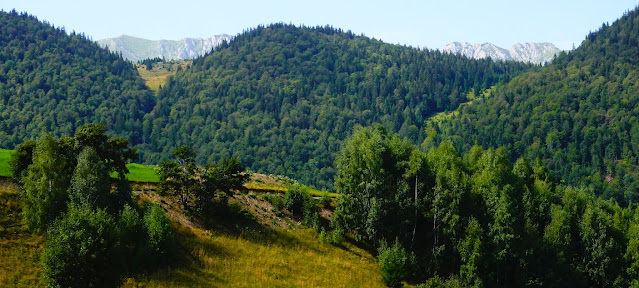This post sees us drive from Brasov into Transylvania ending up in Curtea De Arges via Rasnov, Bran and Pestera. We visited a castle and cave in Rasnov and “Dracula’s Castle” in Bran with extraordinary views of two Transylvanian Mountain Ranges in Pestera. A terrific drive.
Rasnov (Pop 15,022, Elev 650m, Founded 1225) is a mini version of Brasnov, complete with its own background mountain, Hollywood sign and castle overlooking a small but quaint plaza and rows and rows of colourful houses. We rode the Cogwheel Train, 750m long and rising 91m steep above Rasnov to the Rasnov Citadel (Fortress) built in 1225 by the Teutonic Knights (a German religious military order) and was later occupied by the Ottomans from 1421 until liberation in 1877. The view alone is well worth the visit.
Our next attraction was another bitter-sweet moment. The Valea Citatti Cave is only 3.3km from Rasnov. Bitter because we waited one hour to see five chambers which only took 15min to visit and were sweet to look at but not worth the 60min wait.
The highlight of the day was also bitter-sweet. The Bran Castle in the town of Bran just 25km from Brasov. Sweet because it is awesome looking, spooky with incredible rooms and views inside. Bitter because there were thousands visiting it and all of us waddled around inside like sardines in a can !!! Bran Castle was built in 1212 by the Teutonic Knights and is a national monument and landmark in Transylvania. For reasons unknown, Bran Castle is commonly known outside Transylvania as Dracula's Castle, it is marketed as the home of the title character in Bram Stoker's Dracula. There is no evidence that Stoker knew anything about this castle, which has only tangential associations with Vlad the Impaler (Stoker’s inspiration for Dracula). Stoker's description of Dracula's crumbling fictional castle also bears no resemblance to Bran Castle. The castle is now a museum dedicated to displaying art and furniture collected by Queen Marie, which we saw and was worth seeing.
Pestera is one of many villages in the Piatra Craiului National Park, which is dominated by a huge mountain ridge of the same name. Rising to 2238m it is a sight to see as you will see below. The area closely resembles the Swiss Alps with its rugged peaks, intensely green hills and cute colourful pitched-rooved farm houses everywhere.
Curtea De Arges (Pop 26,133, Elev 420m, Founded 12th Century) was the first capital of Wallachia (12th Century Romanian Region that rebelled against Hungarian Kingdom occupation of Romania) and preserves the most important Byzantine edifices on the territory of Romania, among which is the Princely Church of St Nicholas built in 1352 that houses the remains of Radu Negru, the founder of Wallacia and now a Romanian Orthodox Saint. The iconography inside St Nicholas dates from 1352 and is the most impressive I have seen to date on this trip. Curtea de Argeș Monastery and Cathedral is also very significant in that it is now the resting place of the two most important Monarchs of Romania: Ferdinand I (and his Queen Marie) and Carol I (and his Queen Elizabeth) whom we visited. Curtea de Arges has a great tree-lined boulevard connecting the Monastery with St Nicholas and as we walked it we happened upon a Romanian Music & Dance Festival and a special guest star, both to be highlighted in the film.
Until the film, enjoy the sights and culture that is Transylvania…
COUNT PARIS !!!



































No comments:
Post a Comment